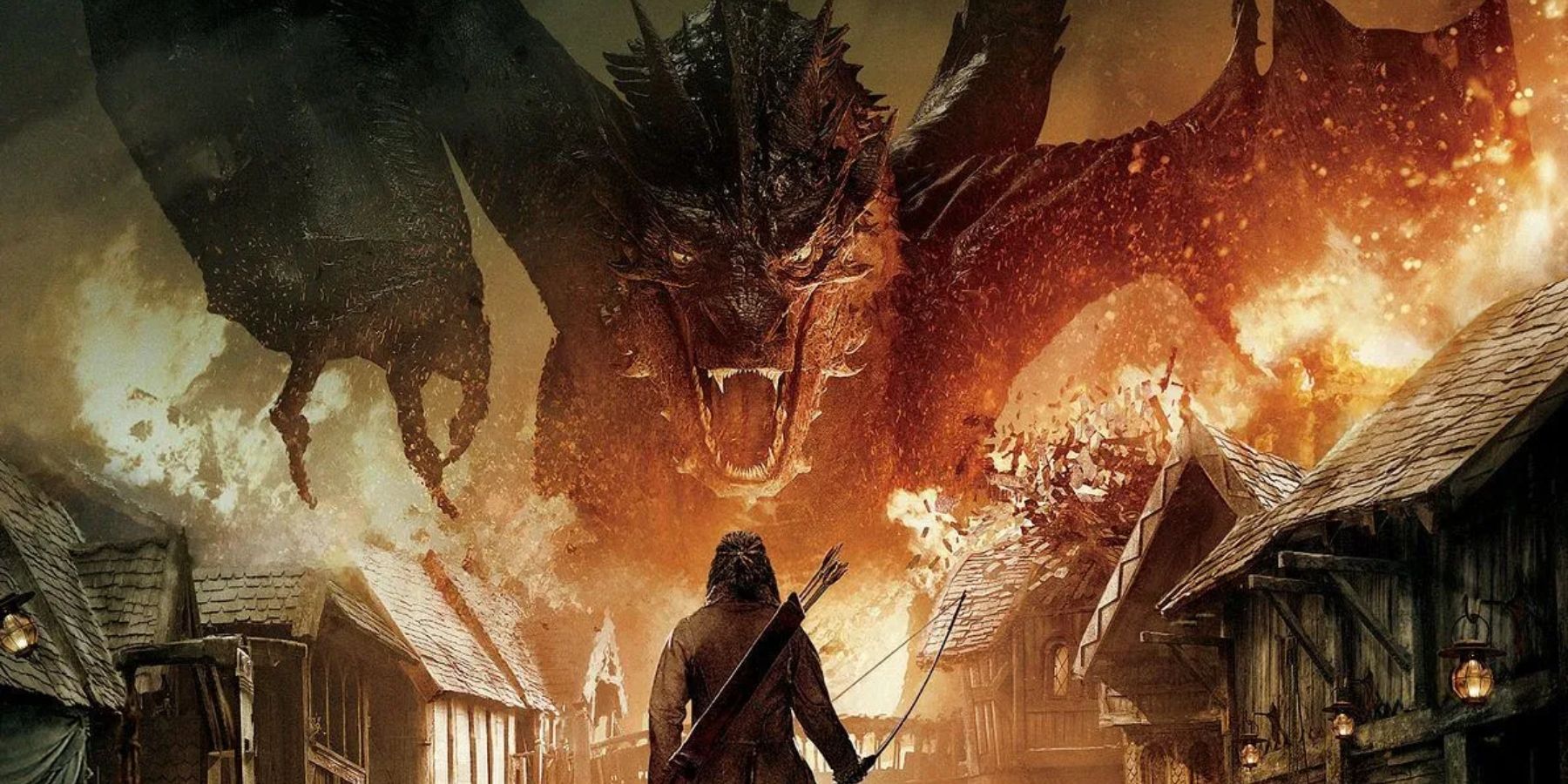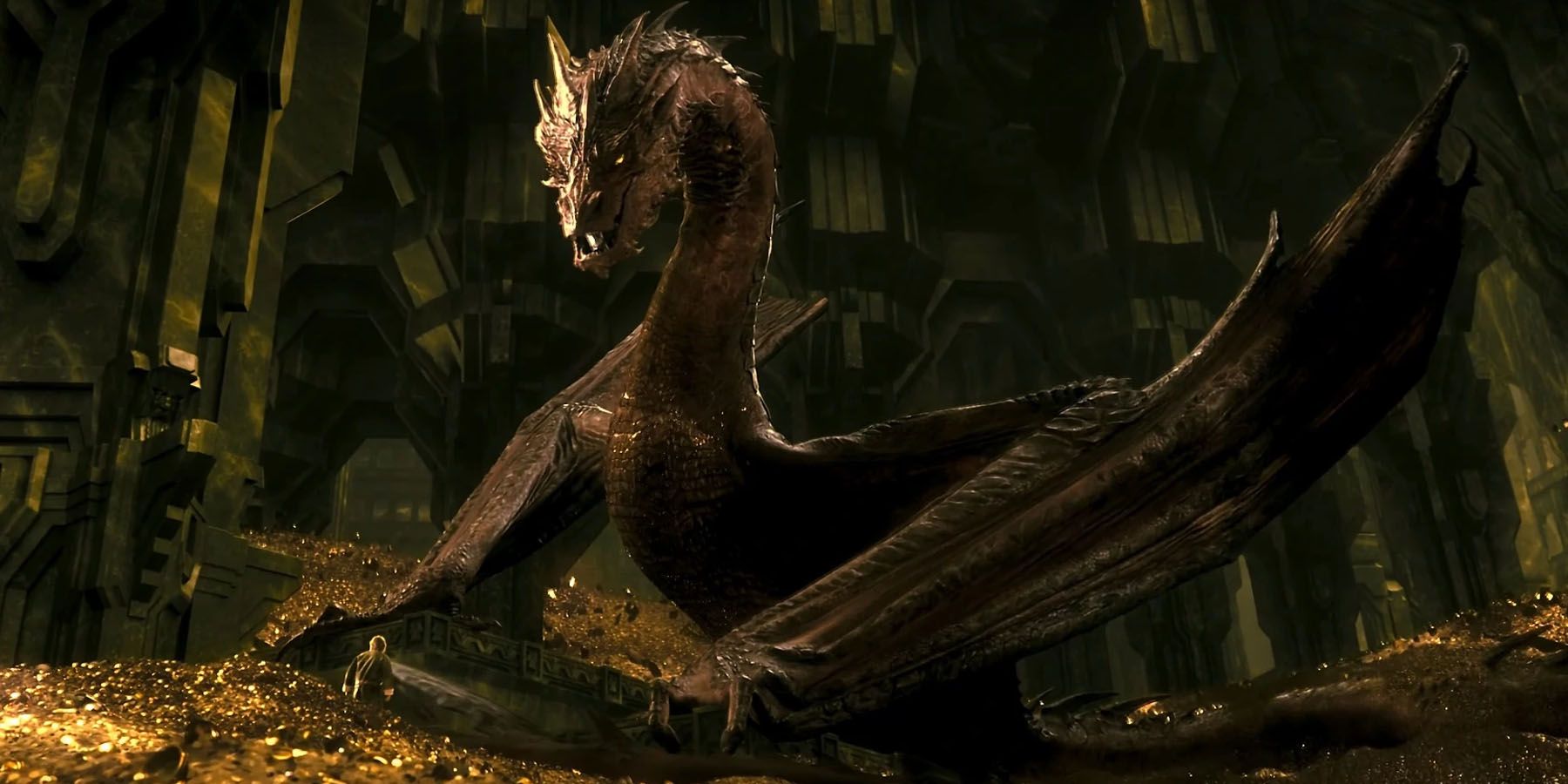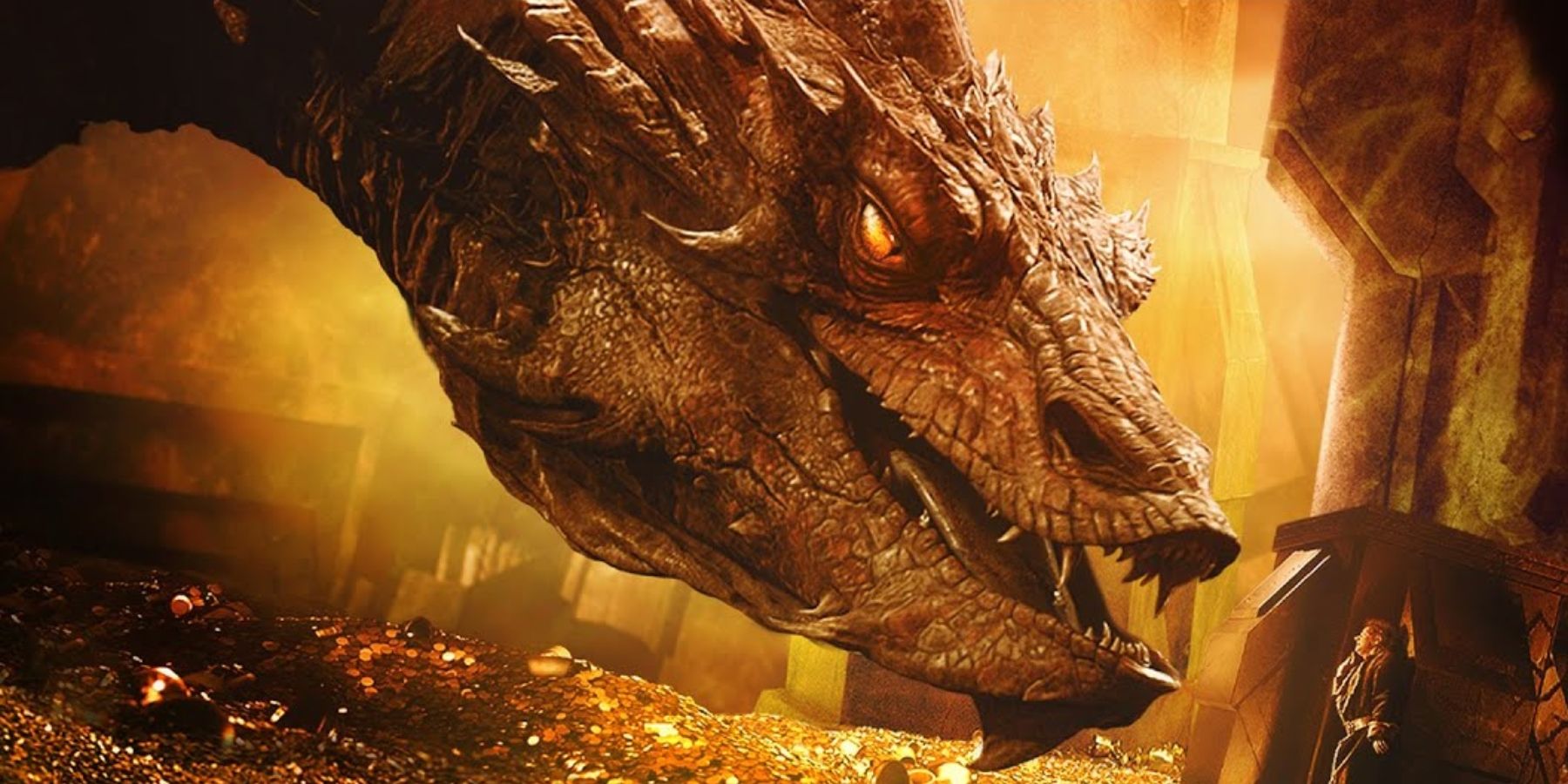Smaug is probably the most iconic dragon of modern fantasy culture. He is the epitome of everything a dragon should be: fierce, intelligent, greedy and magnanimous. During Bilbo’s confrontation with him, the audience can see Smaug cleverly trying to prize information out of the hobbit, using every tactic in the book, from belittling the smaller creature, to making him doubt his expendability in Thorin’s eyes. But the key thing that the audience learns about Smaug in this interaction is that he is the literal embodiment of dragon-sickness. He is the dragon that has sat brooding over a pile of gold for so long that it has infected his mind, and he has infected the treasure in return.
This is a motif that is carried on throughout the film, for example in the fact that both Thorin and Smaug share the line “I will not part with a single coin, not one piece of it.” The line shows how their gold-lust has essentially become a mental illness, to the point where they would be willing to wage war, slaughter hundreds, and even die themselves for the sake of not giving up the most minute amount of the money in all the thousands and thousands of troves of gold in the halls. But where does Dragon-sickness originally come from in Tolkein's world?
Right through from his younger years into his days as a student and then as a professor, Tolkien loved dragons, and the myths and legends surrounding them. Dragons have existed in lore for thousands of years, across all areas and countries, from the medieval writings of King Arthur and his knights, to the Norse stories that came across from the sea, to the dragon-gods of Chinese tradition, to the Anglo-Saxon stories surrounding Beowulf and his monsters (which were also an inspiration for Beorn). So when Tolkien began writing The Hobbit, and he first envisioned his character Smaug, he was paying homage to these great many mighty creations that had come before. The same is true of the dragon-sickness that features so heavily in the original The Hobbit novel. It is not necessarily an original concept, but is more of a compendium of the alluring and seductive powers of the dragons from those older stories, and how their malicious desire and greed for their treasure can be passed on to the hero who is trying to rid the nearby town of the beast. The character of Smaug, and his ability to imbibe Thorin’s gold with the sickness to the point of driving the dwarf mad, is believed to be based on one particular Norse Saga.
The Volsunga Saga is a well-known warning in Nordic culture of the dangers of greed and hubris, and is a story based on the quarrels that rich family inheritance can bring. As the legend goes, Fafnir was one of three sons of Hreithmar, a mightily wealthy man who had been awarded a hoard of gold by Odin. However, Odin, being the tricksy god that he was, had placed a curse upon the riches. This curse inspired Fafnir to kill his father and one of his brothers, in order to claim all three shares of the gold for himself, rather than the one-third inheritance his father would have left him. Fafnir drove his other brother away, and locked himself inside the hall with the gold, determined to defend it. But over time, the gold seemed to have a peculiar effect on him. He began to grow scales, his neck elongated, and his teeth grew sharp in his jaws.
Over time, Fafnir turned into a large dragon and fell into a deep sleep over his mound of treasure. From this point, the third brother, Regin, had convinced a young man by the name of Sigurd (the hero of the story) to kill the dragon. Sigurd succeeds in his mission, killing Fafnir, but not before the dragon has tried to prize the boy’s name from his lips. In many mythologies, names have power — by gleaning someone’s name, one can control that person.
This is something that Tolkien also drew heavily upon in The Hobbit, which is why Bilbo is clever enough to call himself by titles such as "web-cutter" and "clue-finder," rather than introducing himself properly. Unfortunately, this is not a trick he remembered to use with Gollum, to whom he actually gave the name Bilbo Baggins, and also the place of his home, The Shire. This comes back to haunt Frodo years later, when Gollum reveals this infomatonto Sauron, and Sauron sends his Ring-wraiths to Bag End. But despite Bilbo’s cleverness in front of the highly intelligent and alluring dragon, he is not able to prevent Thorin from falling prey to the curse of dragon sickness, just as Smaug warns him. This is a centuries-old curse that goes back generations and generations, and dwarves are particularly prone to it, because of their overly-ambitious greed.






